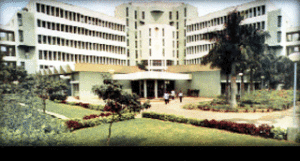New Indian Government Gives CASBAA Hope for Satellite Policy Reform
[Via Satellite 08-04-2014] CASBAA is hopeful that India is closer to enacting long-awaited reforms to its satellite policies under the leadership of new Prime Minister Narendra Damodardas Modi. Following his election to office in May 2014, Modi has shown greater interest in India’s space economy. He attended the Indian Space Research Organization’s (ISRO’s) latest launch of the Polar Satellite Launch Vehicle (PSLV) in June, and has even proposed a South Asian Association for Regional Cooperation (SAARC) satellite project. Though less than three months into his term, these moves give hope that larger satellite policy reform might soon follow.
“The new Indian government has shown several signs of being interested in technology policy in general and satellite policy specifically,” John Medeiros, chief policy offer at CASBAA, told Via Satellite. “We are hoping that they are going to take a good close look at India’s satellite policy, perhaps reissue its satellite policy paper, which hasn’t been reissued in 14 years — its been on the books since the year 2000 — and hopefully make some improvements in the way it has managed its satellite capacity consumption.”
India has been experiencing a “capacity crunch” as the country’s economy continues to show positive growth. The demand for Direct-to-Home (DTH) satellite services has exceeded the available capacity made available through ISRO’s commercial arm Antrix. However, India’s satellite capacity has not been managed in a market-responsive way that allows broadcasters to keep pace.
CASBAA produced a paper aptly titled “Easing India’s Capacity Crunch” in 2013 detailing India’s strong growth and ways the country can quit stifling DTH operators. Suggestions include switching from short three-year contracts to the industry’s preferred 10 to 15 year agreements, and simplifying the process for international contracts with foreign operators.
“Satellite operators have to take a very big leap of faith in order to build capacity to supply the Indian market. They have to believe and hope that they won’t lose their business halfway through the life of the satellite,” said Medeiros. “Frequently what happens in Asia is that the satellites are built with multi-directional beams in locations where they can serve India and maybe somewhere else.”
Furthermore, Medeiros added that India’s digitization policies for the cable industry have bolstered terrestrial broadcasting. This makes the satellite industry even more desirous of capacity in order to compete, as cable operators gain ground in large cities. CASBAA’s 2013 paper suggests ISRO share more of its long-term satellite plans with industry so companies can plan ahead, and that ISRO open up access to additional Ku-band frequencies such as the Fixed Satellite Service (FSS) and Broadcasting Satellite Service (BSS) planned band frequencies.
“The number of homes connected to DTH Ku-band broadcast platforms is estimated at around 60 million … [DTH operators] want to compete with digital cable, they want to compete with each other, [but] they can’t offer enough channels because they don’t have the bandwidth available. They can’t get into HD or Ultra-HD as fast as they would want because there aren’t enough transponders, and they can’t structure a modern operation with redundancy of transponder supply because there aren’t any transponders,” said Medeiros.
According to Medeiros, the proposed SAARC satellite would be unlikely to solve India’s capacity needs, as other satellite services more relevant to developing nations would likely take priority over television. Another challenge to both ISRO and the satellite industry is a lack of orbital slots, he said. Most of the available locations are owned by ISRO. Any domestic operators would have to strike an agreement with the agency for orbital rights — something not at all unconsidered by Indian companies. Medeiros said CASBAA has learned of companies that want to become domestic satellite operators in India. A larger private satellite industry might be brooding under the surface, just waiting for the right regulatory environment in order to hatch.
“There are some large Indian companies that are interested in investing in the satellite industry. We [at CASBAA] know this. They’ve been sniffing around, contacting others; this is something that we think the new Modi government will want to encourage and this may be one reason that they are thinking about reissuing satellite communications policy,” said Medeiros.
Thus far, no change has been seen, but CASBAA remains hopeful that policy reform is on the horizon. The growth of DTH in India is more than strong enough to justify putting additional satellites in orbit to compete with cable. Reforms that create greater stability could spur on greater growth in satellite and lead to a more competitive broadcasting industry, especially if there are companies simply biding their time before making their debut into satellite.
“No private Indian company has yet made the decision that they are going to build and operate their own satellite, but we know they are out there and they are interested,” said Medeiros. “We hope the new government listens to them.”
